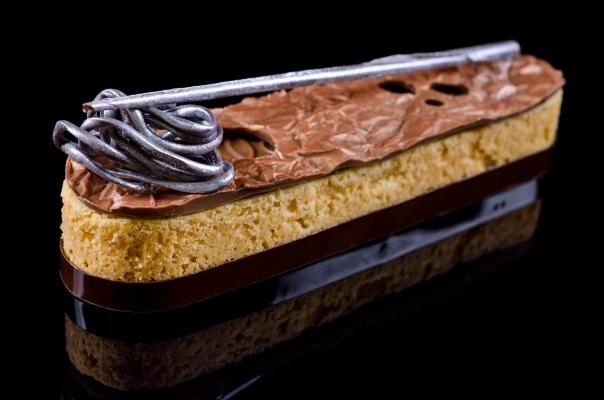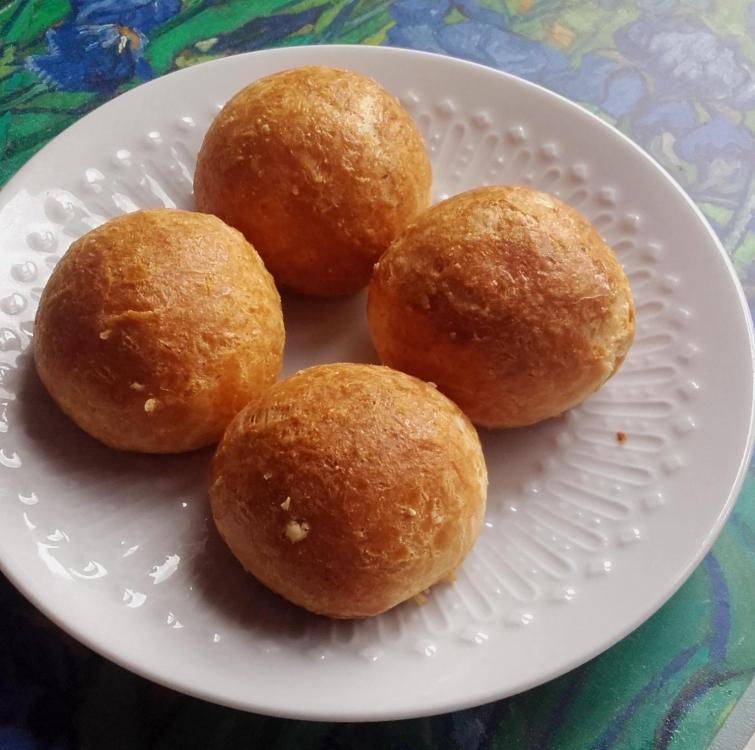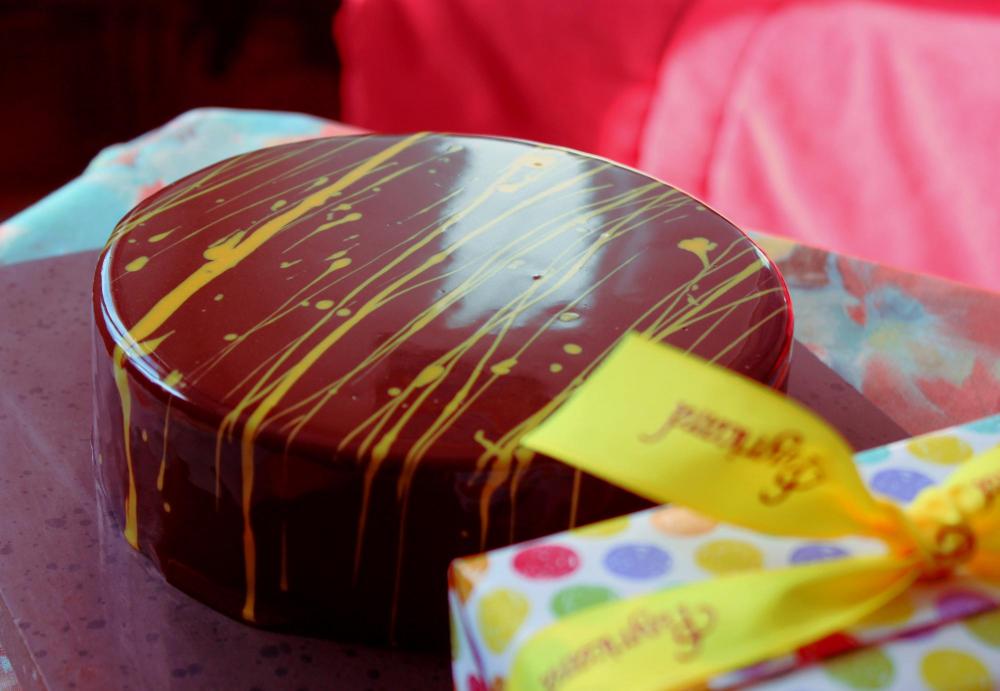-
Posts
838 -
Joined
-
Last visited
Content Type
Profiles
Forums
Store
Help Articles
Posts posted by jmacnaughtan
-
-
2 minutes ago, liuzhou said:
I've mentioned this many times, but n over twenty years in China, I've never, ever seen anyone steam vegetables. Fish, yes. Eggs. Pork. Bread and buns, of course. But never vegetables. They are always stir-fried (in lard (pork fat) or oil) or used in soups/hot pots..
As I've also said before many times, I've never seen a bamboo steamer in a domestic kitchen in China. None of my friends have them and I wouldn't know where to buy one if I had to. There is a street full of kitchen supply shops only ten minutes walk away. They don't have them. They are only used in dim sum restaurants and dumpling/steamed bread shops, although even there they are dying. The metal ones are deemed to be more hygienic.
Sorry, it must have been you I was thinking of. My apologies.
-
6 hours ago, JoNorvelleWalker said:
None of the above.
Brassica and most other green vegetables I prepare in copious amounts of boiling water. An exception is tonight's baby spinach that I am about to go and lightly steam. And of course haricots vert, which by now most people know I pressure steam for thirty seconds.
To me nutrition matters little. What's important is the taste and texture.
I'd agree with that. I generally don't use water for vegetables, unless I'm blanching them or making soup. I prefer to cook a lot of them à l'étouffée (in a little fat, covered with a lid - carrots, especially) or just sautéed. That way you don't lose any of the stuff leaching out, and the flavoured oil helps dress the vegetables.
ETA: I seem to remember huiray talking about Chinese cooks doing this - cooking vegetables in fat rather than in steamers. Seemed like a good idea

-
On 11/06/2016 at 2:57 AM, cakewalk said:
Thanks so much for your response. I make Sherry Yard's lemon curd, which calls for 1/2 cup lemon juice and 1/4 cup lime juice. The lime juice works wonders.
I was thinking for orange curd I'd use 1/2 cup OJ and 1/4 cup lemon juice. Presumably I start with more OJ and reduce until I have 1/2 cup left? Or am I reducing the 1/2 cup of orange juice? Seems that I'd be reducing it to almost nothing.
On 11/06/2016 at 3:16 AM, pbear said:I'm quite certain jmac means to reduce to the volume of the lemon juice, i.e., in your case, from 1-1/2 c to 1/2 c. Personally, I'd use concentrate rather than a reduction, as I think the flavor is better, but I suppose that's a point over which reasonable cooks could differ.
ETA: I almost said the first time that orange and lemon makes more sense to me than orange and lime, but decided that wasn't the question asked. Looking at the canonical lemon curd thread I notice a similar recommendation from another source, so I'll throw it out there.
Sorry for the confusion - I meant to say that if the recipe says 1/2 a cup of lemon juice, take 1 1/2 to cups of orange juice and reduce it down to 1/2 a cup. That way you get the acidity and concentration without having to use any extra lemon or lime juice.
-
1 hour ago, cakewalk said:
I was looking around for a recipe for orange curd, and I came across this old thread. I'm bumping it up because it is so worth being bumped!
Take your favourite lemon curd recipe, and replace the lemon juice with freshly squeezed orange juice that you've reduced by around 2/3 or 3/4. Depending on what you want to do with it, adding 1% of the final weight in bloomed gelatin will improve the set, and/or 3% in cocoa butter will improve the texture.
I generally use gelatin and cocoa butter together when I want to use less butter.
ETA: don't reduce the juice with the rind, or it can become bitter. Add that to the sugar and egg mix.
-
 2
2
-
-
I get the impression that the whole "frozen dinners reheated by 70% of restaurants" thing is wildly exaggerated. Firstly, what is considered a restaurant can be anything from a bistrot to a McDonald's to a corporate or school canteen. Secondly, the documentary looked at restaurants that brought in "ready meals or frozen ingredients". You can include frozen ingredients into high-quality dishes. In fact, all of the major pastry places in France and around the world rely on frozen purées, etc.
I can only really compare France with the UK, but from what I've seen, there tends to be a similar level of quality at both the cheapest and most expensive restaurants in both countries. The major difference seems to be in the mid-range, where you're much more likely to eat well here than across the Channel.
-
 1
1
-
-
On 22/05/2016 at 3:12 AM, Tri2Cook said:
Never seen or heard of something like this but it'd be awesome to find it in pretzel salt form. I like using pretzel salt on pretzel buns but then you have to choose between storing the extra buns in a paper bag so the salt doesn't dissolve by the next day (but the buns get hard) or in an airtight container so the buns stay soft (but the salt dissolves by the next day).
I don't have a lot of experience with pretzels, but I know with baguettes that go hard, you can just throw them in a hot oven for five minutes to "refresh" them. It might work with pretzels - soft bun, crunchy crystals and, as a bonus, they'd be warm.
-
 1
1
-
-
-
7 hours ago, Lisa Shock said:
Actually, I have been thinking of running an experiment to track my oven's temp during cooldown. I often roast one thing at high heat, or make pizza, then stick in something else to roast with the residual heat, like heads of garlic or vegetables that might be getting a little iffy. (if I cook 'em, they'll last another 5 days or so) Anyway, I am always looking to get more out of that cooling oven, and I think there's a good chance that I can get to at least stage 1, maybe stage 2.
You could do; I think it would depend on the size and insulation of your oven. You'd probably have to keep an eye on the sugar for the first 20 minutes or so too, to avoid burning.
-
 1
1
-
-
It seems fun, but especially as it's starting to get warmer, it seems like a lot of effort to run the oven for five hours...
I'd probably just go with the derided caramel powder if I needed something like that, or brown sugar for a more complex flavour.
Although saying that, it might be interesting to roast brown sugar too.
-
 2
2
-
-
On 09/05/2016 at 11:14 PM, Alex said:
The New York Times has discovered aquafaba.
I saw that. Way ahead of the curve, as usual.
-
 1
1
-
-
4 hours ago, gfron1 said:
Here's an article about this process with RECIPE
She does make it easier for herself by using a lot of curved-top cakes, eliminating the need to sweep off the top layer.
I wonder how she does the blue-white marbling one, though? That's pretty...
-
10 hours ago, keychris said:
I would be worried about the high water content of a gelatine based filling in terms of shelf life, but if your chocolate is set and cold you may be able to put warmer fillings into it as the shell itself will cool the filling below the temper point of the chocolate before it de-tempers?
I don't think there's any problem with filling them - gelatine takes ages to set, even if it's at room temperature or below. You can definitely get it cool enough to keep your chocolate in temper.
It might be interesting to use gelatine centres for dipping, too.
-
1 hour ago, Anna N said:
Thanks! Fortunately, they all turned out like that; often choux can be temperamental in my oven.
Now I have to stop eating them before tonight.
-
 1
1
-
-
-
6 hours ago, Baron d'Apcher said:
Organic poulet rouge with ventrèche, fatback, livers and stuffed morels. Diced, ground, seasoned, rolled in its skin and poached.
Is "poulet rouge" the same as Label Rouge chickens, or is it a separate variety?
-
-
I'm not sure I have a test dish - I judge by whether the food looks, smells and tastes like I want to eat it. And preferably no silly plating or garnishes...
However, for desserts in a new place I'll go for the rum baba. It's very hard to screw up, but it's also very hard to make it memorable.
ETA: If I'm being honest though, I'll often judge a restaurant more on the service than the food. I've had a lot more good food ruined by lousy service than vice versa.
-
16 hours ago, IowaDee said:
I have heard the phrase "pigeon egg blue" forever. And now I find out they are white. Or maybe it refers to a different species of pigeons?
As to using them, would pigeon pie be one possibility? People around here just refer to them as flying rats so I have never tasted one.
Interesting: I always heard it was "robin's egg blue".
I'd fry the eggs in butter first, to see what they taste like, and then go on from there. I'd guess that they won't taste much different to hen's eggs, so either use them as normal or take advantage of the size and make something dainty

-
 1
1
-
-
-
1 minute ago, Bakerchic said:
I don't know if they're authentic or not, but there are several folks on you-tube who profess that is easy and cheap to make it by caramelizing part of the sugar, pouring a hot syrup mixture into it, and voila- it comes out golden. They use a lemon in the syrup to eliminate crystallization.
I always prefer to make my own stuff, since I'm not in the business and time doesn't matter much.
That sounds more like a caramel syrup than a golden syrup - it's not made in the same way and won't have the same flavour. I'm pretty sure that golden syrup is a by-product of the refinement process, and the colour and flavour come from the impurities in the sugar rather than any caramelisation.
The normal Tate & Lyle's is not normally expensive, hard to find or low quality, so I don't really see the point of making it at home...
-
 3
3
-
-
Unless you have a sugar refinery, how do you make your own golden syrup?
-
 1
1
-
-
A good way is to add cocoa butter, butter and gelatin. Use 100g of butter, 30g of cocoa butter and 5g of gelatin for a recipe using 500ml of milk - add the cocoa butter and gelatin just after you take it off the heat, then blend in the cold butter when it gets down to around 50°C. Chill it, then whisk or whip to smooth it.
The butter makes it rich, the cocoa butter gives it a texture that's a bit more like a ganache and the gelatin lets you whip it, if you want, or just keeps it firmer
 7 hours ago, Tri2Cook said:
7 hours ago, Tri2Cook said:Try 2:1 with pastry cream and butter (a mousseline)... if that's still not rich enough, I'll be thoroughly impressed.

You can make a better mousseline by doing 1:1 pastry cream and French buttercream

-
 1
1
-
-
On 19/02/2016 at 2:19 PM, Vlcatko said:
Hmm, so it's not a common practice then - to lard dryer meats? Quite a few of Czech dishes (that are now quite commonly called traditional) use larding so I thought it was a regular thing... Then again, I'd never heard of larding with butter before, so there's that

I've never tried it, but I did see a "traditional" Czech cookbook that called for larding a roast beef joint with hot dogs. I found that both really funny and potentially delicious

-
 2
2
-
-








Making meringues
in France: Cooking & Baking
Posted
I don't recommend baking Italian meringues: in my experience, they go hard and gummy. Swiss meringues are better for this. But if you've properly beaten the meringues, you shouldn't have a problem with them holding their shape - I was taught to meringuer the whites, mixing at half speed while incorporating around 2/3 of the whites, then once you get stiff peaks cranking it right up and adding the rest.
For a really good texture, a good thing to do is replace half the caster sugar with icing sugar. Use just the caster sugar when whipping, then once it's properly stiff fold in the seived icing sugar and pipe. They don't hold their shape quite as well, but the light, crumbly texture makes up for it.